Every healthy garden starts with knowing the specific types of soil that suit the plants in your garden.
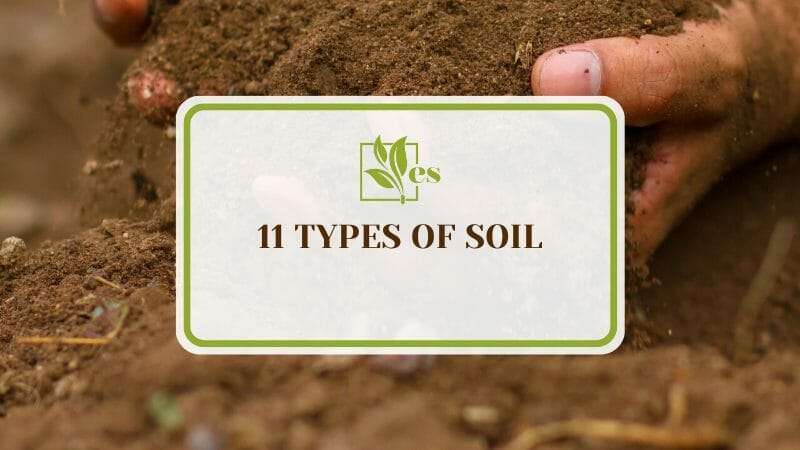
Knowing the various soil types and how to prep your garden ensures you reap the rewards of a fruitful and colorful garden.
This guide will brief you about the different types of soils, their individual characteristics and their importance.
JUMP TO TOPIC
List of the Main Types of Soil
1. Sandy Soil
If your garden soil looks more like a beach, it means you have sandy soil. Try to squeeze the soil into a ball, and the soil runs through your fingers.
When the rain pours on sand soil, you rarely see puddles. Maybe it rained yesterday, and you could wonder why your plants are wilting. All these are tell-a-tale signs that you have sandy soil.
– Soil Properties
Essentially, sandy soil contains small particles of weathered rock. This soil type has the largest particle sizes compared to silt, clay, and loam. When observed under a microscope, sandy soil looks like a collection of marbles.
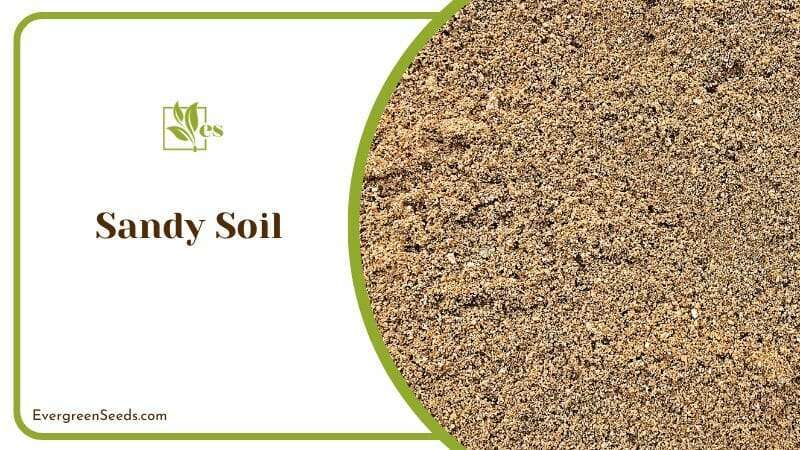
They have large particles will lots of spaces in between. The large spaces between sand make it easy to lose nutrients when it rains. That said, sandy soils are the poorest soil type. The soil doesn’t hold onto its nutrients or water, which makes it difficult for plants to thrive.
Despite the poor quality of sand, it’s easier to work with it than clay soil, and it offers several benefits. For instance, sand’s loose and airy texture promotes good drainage. This soil type isn’t characterized by over-watering issues like crown and root rot.
Sandy soil can be improved using organic materials and mulch laid on top. Adding organic materials will change the soil composition. Compost, manure, shredded leaves, wool pellets, coir, finely shredded wood bark, and biochar will improve sandy soil. Allowing these components to dissolve will add nutrients to the sandy soil in your garden.
2. Clay Soil
Clay soils have opposite characteristics to sandy soil in terms of drainage and the size of soil particles. Unlike sand, clay particles are so small, and the texture gets firmer when pressed together.
Clay is easily compacted, leaving little room for water to drain. While clay has poor drainage and makes it undesirable for agricultural activities, the soil is rich in minerals and nutrients, which can be helpful for specific crops.
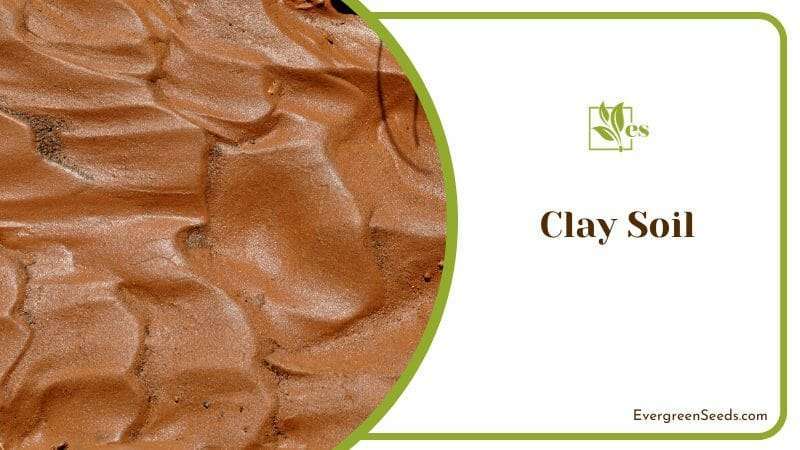
– Soil Properties
There are a number of tests you can perform to identify clay soils. When you rub clay soil on your fingers, it feels sticky. The soil can also leave streaks on your hand. Clay soil has a shiny appearance compared to the rough texture found in other soil types.
Plus, it doesn’t crumble; a clay sample can be stretched to some extent without breaking. Visually, clay soils don’t seem to have any particles and have a brown or distinct red color.
The poor characteristics of clay soil can be improved to ensure you can garden in this soil type. All you have to do is to aerate clay by adding organic matter and improve its drainage. Add shredded leaves, composed, well-rotted manure, and straw.
Planting in raised beds also works as this helps to improve drainage. Some plants that tolerate clay soil include red maple, buttonbush, yellowroot, spotted jewelweed, etc.
3. Silt Soil
Silty soils have high fertility ratings and are known to have smaller particles than sand. This soil type is light and moisture retentive. It contains smaller particles of the size between clay and sand soil. Due to its high fertility rating, silt soil is perfect for planting and growing plants. When used in gardens, it provides plants with proper nutrition and support.
– Soil Properties
Silty soil can occur as a mixture of sand and clay. It can also occur as a suspended load or soil in a river bed. Often, the soil that deposits at the bottom of a water body is silt. Silt has a non-sticky, plastic feel and usually feels floury when dry.
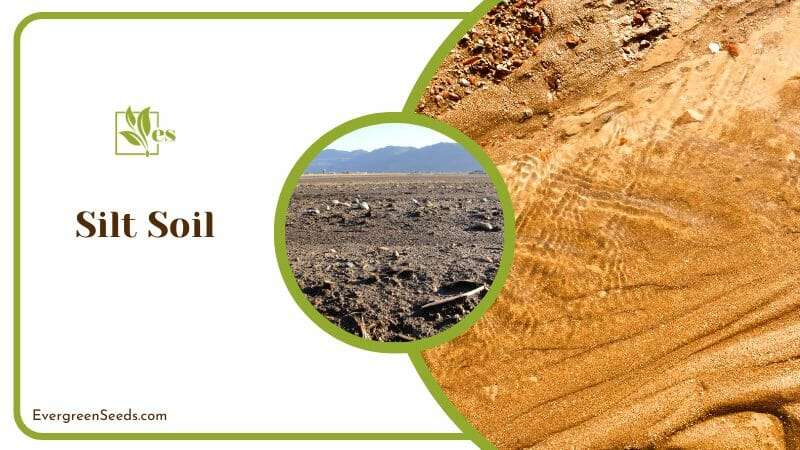
With regard to soil texture, silt has bigger particles than clay and smaller particles than sand. It can be identified by its beige to black color. While silt is rich in minerals and supports various plant growth, its water-holding capacity isn’t that good. Therefore, it works best when mixed with other soil types.
The texture of silt soil can be compared to that of talcum powder, meaning it’s easily washed away in heavy rains. To improve its water-holding capacity, add organic matter to it. This helps to add weight and other vital nutrients to the soil.
Since silt has fine particles, another way to ensure it serves your garden is to avoid compaction. Minimize walking on areas where you’ve grown plants or on your garden beds. Growing your plants on raised beds can help to prevent stepping on the soil.
4. Loam Soil
Loam soil is a common soil type containing a mixture of sand, clay, silt, and humus. As a rule of thumb, the loamy soil in your garden should contain equal mixtures of the three soil types: sand, clay, and silt.
The right combination will create an ideal soil texture for successful plant growth. Depending on how the soil is mixed, loam soil is loamy sand, clay-loam, etc.
A soil mixture with more sand tends to resist compaction and is ideal for areas with high traffic. Loam soil is beneficial for plant growth in three important areas: aeration, nutrient retention, and moisture retention.
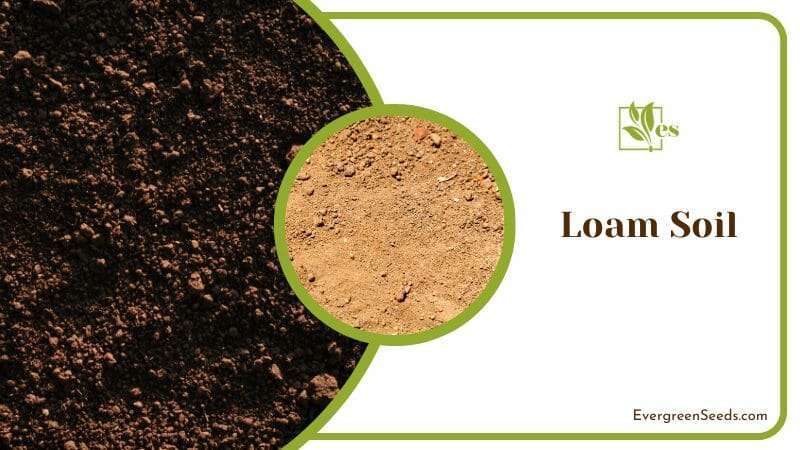
– Soil Properties
A quick soil test can help determine whether your landscape is loamy. Grab a handful of loose soil in your garden and squeeze it to form a ball. Open your fist and observe how the soil changes.
Loamy soil will maintain its round shape but will crumble easily when poked. If your soil doesn’t pass this test, it means that the soil doesn’t have the right balance of clay, sand, and silt.
If the soil profile is too heavy on clay, balance it by adding sand. However, adding organic matter is the best way to fix the soil imbalance components. Doing this attracts beneficial organisms that work to improve the quality of loam soil over time.
Loam soil supports various plant growth, including honey locusts, pine species, soft maple, rose, hazel, and drought-tolerant ornamental crops.
5. Peat Soil
Peat soil is rich in organic matter. By definition, peat refers to the surface organic matter of soil properties with decomposed materials. Most of the organic matter used to create peat is derived from plant material such as decaying sphagnum.
In most cases, you’ll find peat soils in peatlands, also called mires or peat bogs. Most of these bogs are found in Southeast Asia, Russia, and Scotland.
– Soil Properties
This soil type is mostly used as an addition to existing topsoil to improve the soil structure. Since the soil is rich in organic matter, it also helps to provide vital nutrients that support plant growth. However, it’s worth noting that the perks of peat soil come at a high cost.
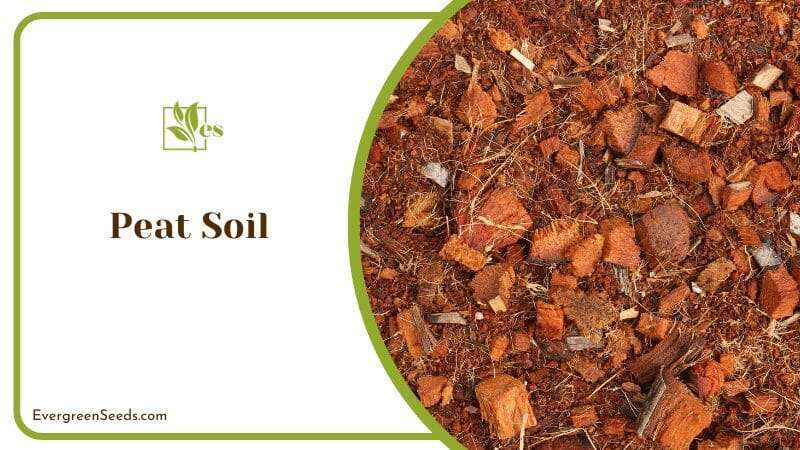
Amending your topsoil with peat prevents compaction. Peat enhances aeration, which gives more room for plants to breathe. What’s more, peaty soil is usually recommended when growing seeds because it’s pathogen-free. It’s treated to ensure it doesn’t contain harmful microorganisms like bad bacteria and weed seeds.
Peat soil’s organic content retains moisture, making it a great addition to dry soils like sand. The soil has low pH levels. This means it’s beneficial to alkaline soils, particularly for plants that do well in soils with higher acidity, like azaleas and blueberries.
Despite these benefits of peat soil, one of its downsides is that it’s unsustainable and non-renewable. Harvesting this soil type releases toxic gases like methane and carbon dioxide into the air. As a result, it’s best to opt for friendlier soil amendment options, such as compost and organic mulch.
6. Chalky Soil
Chalky soil can make it difficult to work on your garden since this soil has a high alkalinity pH of 7.1 or more. The high alkalinity of chalky soil is due to the high levels of calcium carbonate.
– Soil Properties
Chalky soil is normally shallow and rocky and dries out faster than other soil types featured in this guide. Interestingly, chalky soil is fertile, but the only issue is that it lacks most of the nutrients plants require to grow. The high soil pH prevents plants from absorbing iron, manganese and other essential nutrients from the soil.
Signs your plants suffer from nutrient deficiency include irregular/stunted growth and yellowing leaves. One of the biggest challenges when working with chalky soils is that it gets overly dry in summer.
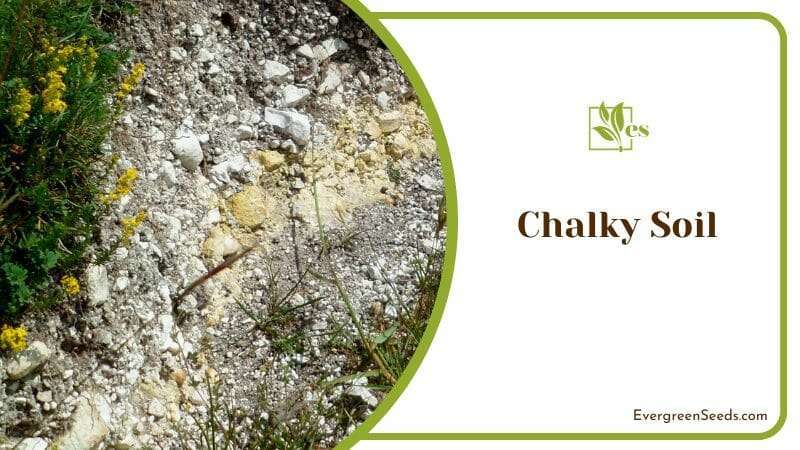
If you want to grow annual plants in this soil, you’ll have to amend it. But alkaline-loving plants will perform well in chalky soils. Smaller plants will also find it easy to establish in chalky soil, but amending the soil over time is vital for sustainable plant growth.
Gardening on chalky soil requires that you take the necessary steps to improve the soil even when growing alkaline-loving plants. Mulching, for example, can help improve the soil’s water-retention capacity.
Occasional watering may also be required depending on the type of plants in your garden. Tilling in organic materials such as leaf mold, compost, humus, and peat moss also helps. Fertilizing your plants with manganese and extra iron can help to provide the required nutrients for the best results.
7. Mulch
You probably are surprised that mulch is among the list of soils in this guide. Well, mulch isn’t a specific type of soil. However, it fits in this list because it’s normally added to the top layer of most soils to improve the quality of the soil.
– Soil Properties
Mulch is made from various organic materials, including leaves, fine wood chips, yard waste, tree bark, and more. The advantage of adding mulch to any layer of soil is that it makes the soil’s surface porous. In turn, this creates spaces for water and nutrients to leech into plants and lower soil horizons.
If you live in a dry area, mulch keeps the soil surface moist by preventing direct sunlight from reaching the soil. During heavy rains, mulching your soil also helps to prevent erosion.
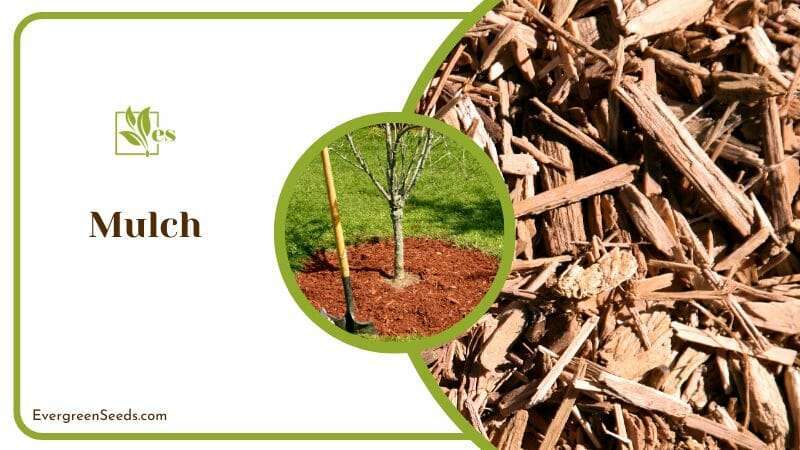
After working hard on your garden to improve the quality of your soil, running water from the rains can wash away all the vital nutrients. To avoid this, mulching is important.
Mulch is also rich in organic matter, and since it decomposes over time, it adds organic nutrients to the soil. There are many ways to use mulch in gardens or planting beds. You can spread the organic matter on these surfaces or even pour it on individual plants and bushes on your farm.
To prevent pests from invading your mulch, keep the layers thin and leave room for air between surfaces.
8. Topsoil
There’s a good chance you’ve used topsoil to amend the difficult soil in your garden. Topsoil is produced for commercial purposes, and most people use it to improve soil quality in their landscapes. The percentage of organic materials in topsoils varies depending on the manufacturer and its intended use.
– Topsoil Composition
Typically, most will have blends of about 2%-10% organic materials. A soil test kit is handy here to help you accurately determine the soil’s pH and chemical composition. A reliable soil test kit will help you achieve your gardening goals, especially if you rely on commercial and natural fertilizers.
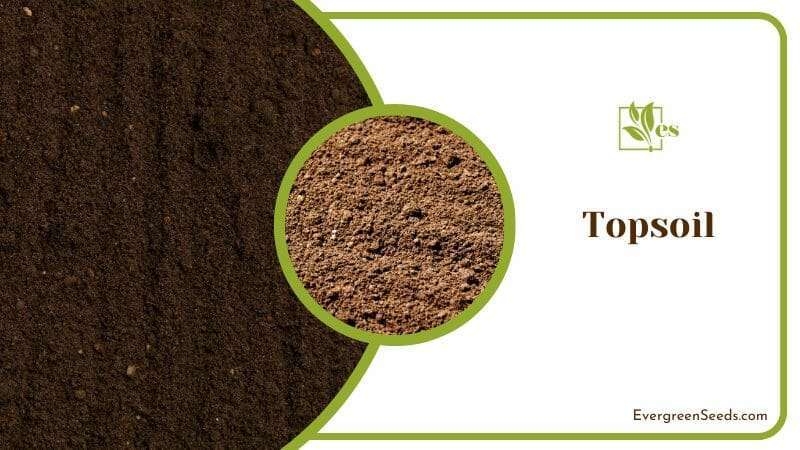
If your plants struggle to grow in your garden, try mixing commercial topsoil with a fraction of the soil in your garden. Dig out about 2-5 inches and mix with topsoil.
The advantage of using topsoil is that it balances the soil pH and improves its moisture and evaporation rates. Plus, quality topsoil will provide your soil with essential nutrients that support plant growth.
Most gardeners make the mistake of buying topsoil and using it as it is without blending it with the existing soil. The barrier between the soil types affects how plants absorb water, which leads to drainage and overwatering issues. To remedy this, mix the topsoil with existing soil before growing plants.
9. Gravel
Gardening enthusiasts often use gravel on their planting beds. Maybe you’ve been doing this and don’t know why gravel is a good addition to your planting beds. While gravel lacks beneficial nutrients, it helps to impede evaporation and control moisture levels.
Adding a thick layer of gravel on your planting bed will help to reduce overwatering. It limits the amount of water that gets to your plants or flowers. Similarly, thin gravel layers on soils can reduce soil erosion. In dry environments, adding gravel to your planting bed will slow evaporation.
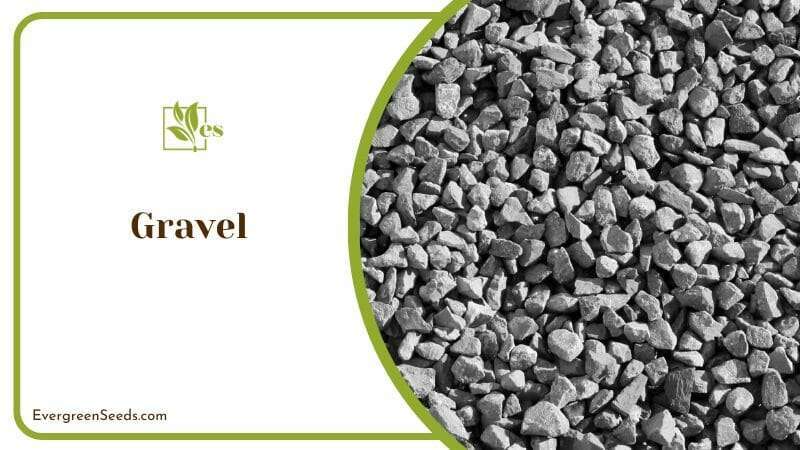
– Uses
That’s not all; gravel is known to expand the heat zone of gardens. Rocks collect heat from the sun during the day and release this heat at night. The advantage gained here is that gardeners can leverage the idea of planting earlier in the season without worrying about cold night temperatures.
Aesthetically, gravel is a great addition to your garden. Apart from providing you with the benefits above, it decorates your garden as it comes in various textures and shades. Add gravel to your garden, and you’ll enhance the curb appeal of each plant.
10. Hydroponics
Hydroponics is a plant-growing technique where no soil is used. It’s also called soil-less gardening. As you ponder on the best types of soils for your garden, you should realize that hydroponics is a gardening technique that works.
– How Hydroponics Work
So, how can plants grow without soil? The basic premise behind hydroponics is that all the plant’s vital nutrients are provided straight to the roots. One of the main perks of this technique is that it eliminates issues with bugs and other pests.
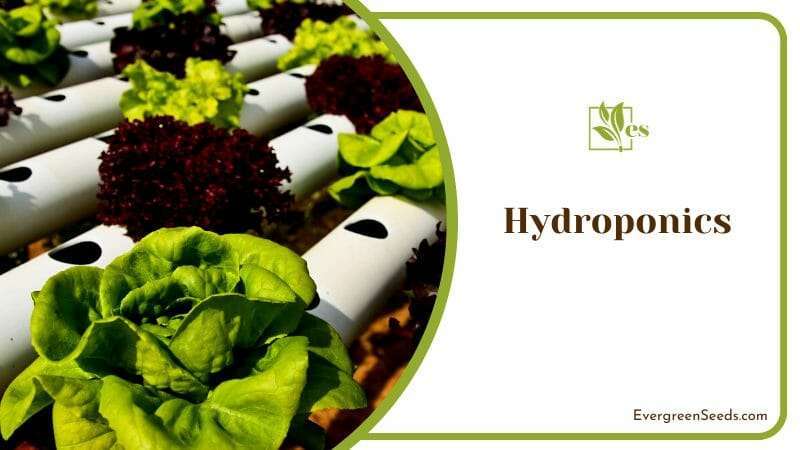
Most hydroponics settings require a medium for the plant roots to establish and stabilize. Gravel or sand can serve as a medium, depending on the plant type. The good thing about hydroponics is that plants can be grown in small or industrial setups.
If you love gardening but can’t enjoy this hobby because you don’t have space, hydroponics is a technique you should try. Virtually many plants can grow hydroponically as long as they are provided with the right nutrients.
11. Compost
Like mulch, compost is used to amend difficult soils. Compost is nutrient-dense and is usually made from different organic waste materials.
When organic waste decomposes, it releases essential nutrients beneficial to plants. Even after adding a layer of compost to your garden soil, it continues to decompose, leaving behind fertilizers and fast-acting chemicals that plants require.
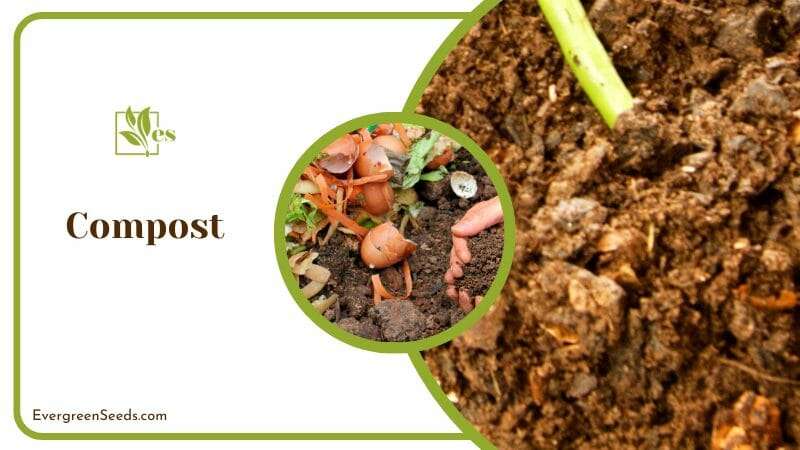
– Soil Composition and Uses
Compost will work well with almost any soil type. For instance, when used in sandy soil, it can help to bind the soil particles together and improve its moisture retention capacity. In denser soils like silt or clay, compost will reduce compaction. Compost should be mixed thoroughly with the existing soil for the best results.












